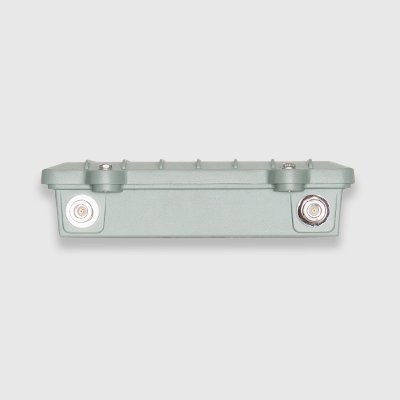Using up to 3×3 antennas1, multiple spatial streams, and Multiple Input, Multiple Output (MIMO) techniques, wireless mesh infrastructure from Aeromesh Systems provides blistering fast throughput and a cost effective alternative approach to terrestrial-based networks such as Fiber. No matter what type of customer or vertical market, Aeromesh can exponentially reduce CapEx and OpEx, which is critical to today’s growing demands for network connectivity, retrofit or new expansion, and migration to new applications for enhanced services and efficiencies.



The Access/One® Network MWS5400 outdoor wireless solution with 3×3 MIMO provides blistering fast throughput at up to 300 Mbps and built for extreme capacity. It supports multiple radio frequencies (2.4 GHz, 4.9 GHz, 5 GHz) concurrently from each unit and is uniquely designed for simultaneous support of multiple applications, VLAN segmented networks, real-time and low latency voice, and high resolution video applications and services.
Aeromesh’s foundational architecture from its inception has clearly distinct advantages over other wireless solutions. It is a true dedicated multi-radio Layer 2 switching wireless mesh backbone providing near full duplex RX and TX and it also combines dedicated client access – all simultaneously from each unit. This provides exponentially greater sustainable throughput and lower latency over multiple hops compared to other A/G/N solutions that employ a store and forward single radio for backhaul, which results in high latency and 50% or greater degradation of available bandwidth and high latency. The A1N5400 can also be wired directly to the network for multiple radio access
Wireless Specifications
- Wireless
- Wireless Standards – G/A/N/AC/J/4.9
Frequency Bands
- 802.11G/N
- 2.4 – 2.462 GHz (Americas, FCC)
- 2.4 – 2.472 GHz (Europe, ETSI)
- 2.4 – 2.497 GHz (Japan, MKK)
- 802.11A/N/AC
- 5.15 – 5.25 GHz
- 5.25 – 5.35 GHz
- 5.470 – 5.725 GHz
- 5.725 – 5.850 GHz
- 802.11A/J/4.9
- 4.92 – 5.08 GHz (Japan)
Receiver Sensitivity Rates
- 802.11a/g/n HT20: -74dBm @MCS7
- 802.11a/g/n HT40: -72dBm @MCS7
- 802.11a/g: -78dBm @ 54 Mbps
- 802.11a/n/ac HT20: -70 dBm @MCS8
- 802.11a/n/ac HT40: -64 dBm @MCS9
- 802.11a/n/ac HT80: -61 dBm @MCS9
- 802.11a: -80dBm @54Mbps
Transmit Power
- Up to 26 dBm (802.11/G/A/N)
- Up to 23 dBm (802.11A/J/4.9/AC)
Modulations
- 802.11a/g: 16-QAM, QPSK, BPSK
- 802.11b: CCK, DQPSK, DBPSK
- 802.11n: 16-QAM, 64-QAM, QPSK, BPSK
- 802.11ac: 16-QAM, 64-QAM, 256-QAM,QPSK, BPSK
Supported Channel
- Widths1, 25, 10, 20, 40, and 80 MHz
Electrical
- Power Over Ethernet, 802.3af or 12-24VDC3
- Max power3 : 20W
- Physical
- Dimension3: 7.25”H x 8.25”W x 2.25”D
- Weight3: 1.08Kg
- Weather Rating: IP67 weather tight
- Wall, Pole Mount3
- Operating Temperature3: -40°C to 50°C
- Storage Temperature: -40°C to 70°C
- Humidity: 95% Non-condensing
System
- Extreme Bandwidth – Low Cost Alternative to Cabled Solutions
- Extreme Capacity and Performance
- Extreme Architecture
- Easier Large Scale Deployments & Network Management
- Failover & Reliability
- Mobility & Roaming
- Security & Optimization
- Applications
Features
- Extreme Bandwidth – Low Cost Alternative to Cabled Solutions
- Extreme Capacity and Performance
- Extreme Architecture
- Easier Large Scale Deployments & Network Management
- Failover & Reliability
- Mobility & Roaming
- Security & Optimization
- Applications
APPLICATIONS
- WISP ,Carriers, Telcos and Cable Operators
- Military and Disaster Management
- Police, fire, and emergency medical services
- Video Surveillance ,Mobility Solutions, Critical Infrastructure
- Integrated Highway Management, High Speed Rail Network
- Industries, mining, construction sites, Ports etc
- Shopping malls and hot-spots (Coffee shops, book stores etc).
- Hotels, conference and convention centers and resorts .
- Automatic Meter Reading,SCADA
- Hospitals ,Universities and college campuses